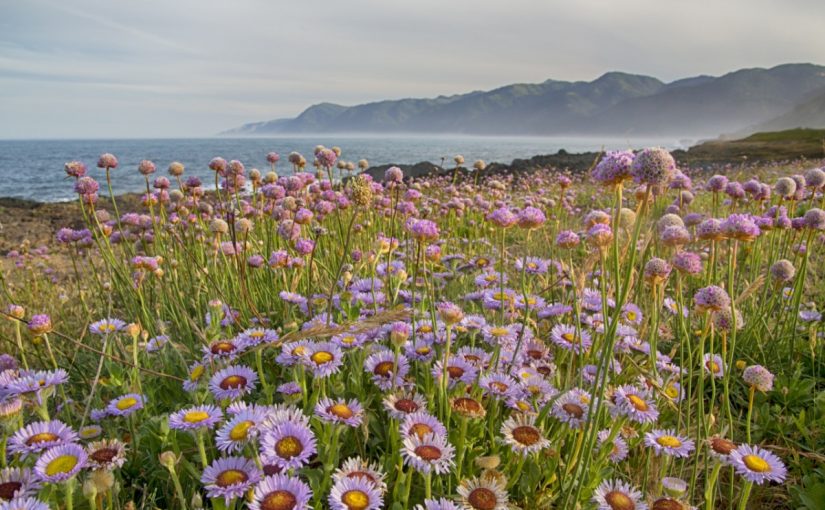Photo from the California Bureau of Land Management
Much of the northern and central coasts of California are dominated by treeless prairies – these landscapes were intentionally cultivated.California coastal grasslands were burned every 1-3 years by Native Californians to increase harvests of grains, tubers, and bulbs.[1] These regular burnings also kept conifer trees from becoming established due to their inability to withstand fire.
Other famous areas of California were maintained by intentional burnings as well. In Kat Anderson’s ‘Tending the Wild’ she relays knowledge from a conversation with a man named James Rust who is Southern Sierra Miwok about Yosemite Valley.
‘In the old days there used to be lots more game – deer, quail, gray squirrels, rabbits. They burned to keep down the brush. The fire wouldn’t get away from you. It wouldn’t take all the timber like it would now. In those times, the creeks ran all year round. You could fish all season. Now you can’t because there’s no water. Timber and brush now take all the water. There were never the willows in the creeks like there are now. Water used to come right out of the ground. I remember Yosemite when I was a kid. You could see from one end of the Valley to the other. Now you can’t even see off the road. There were big oaks and big pines and no brush. There were nice meadows in there.’[2]
An artist from the late 19th century named Constance Gordon-Cumming warned of the danger of no human intervention in Yosemite Valley.
‘Indeed, there is a corner of danger, lest in the praiseworthy determination to preserve the valley from all ruthless ‘improvers’ and leave it wholly to nature, it may become an unmanageable wilderness. So long as the Indians had it to themselves, their frequent fires kept down the under-wood, which is now growing up everywhere in such dense thickets, that soon all the finest views will be altogether hidden, and a regiment of wood-cutters will be required to clear them.'[3]
Next time you are in Yosemite or coastal California, it’s worth taking the time to appreciate these gardens.
[1] http://www.sonoma.edu/cei/prairie/history/last_10000years.html
[2,3] Anderson, K. (2005). Tending the wild: Native American knowledge and the management of California’s natural resources. Univ of California Press.
